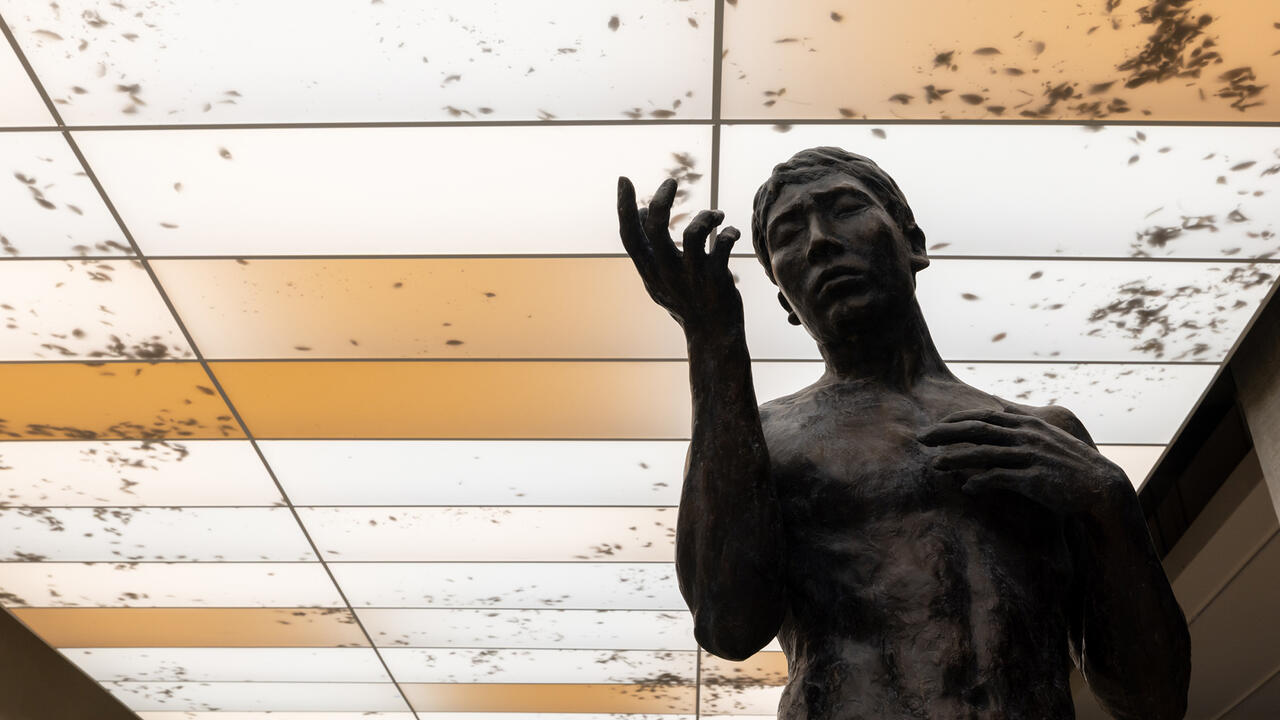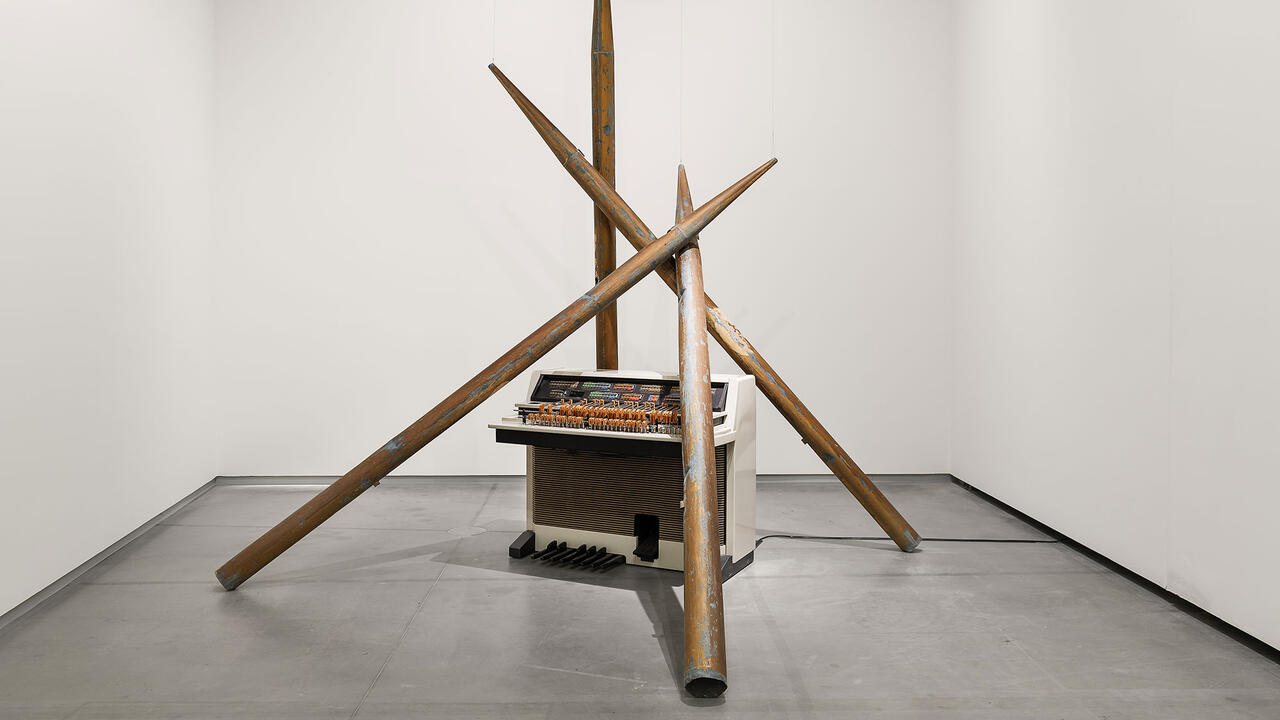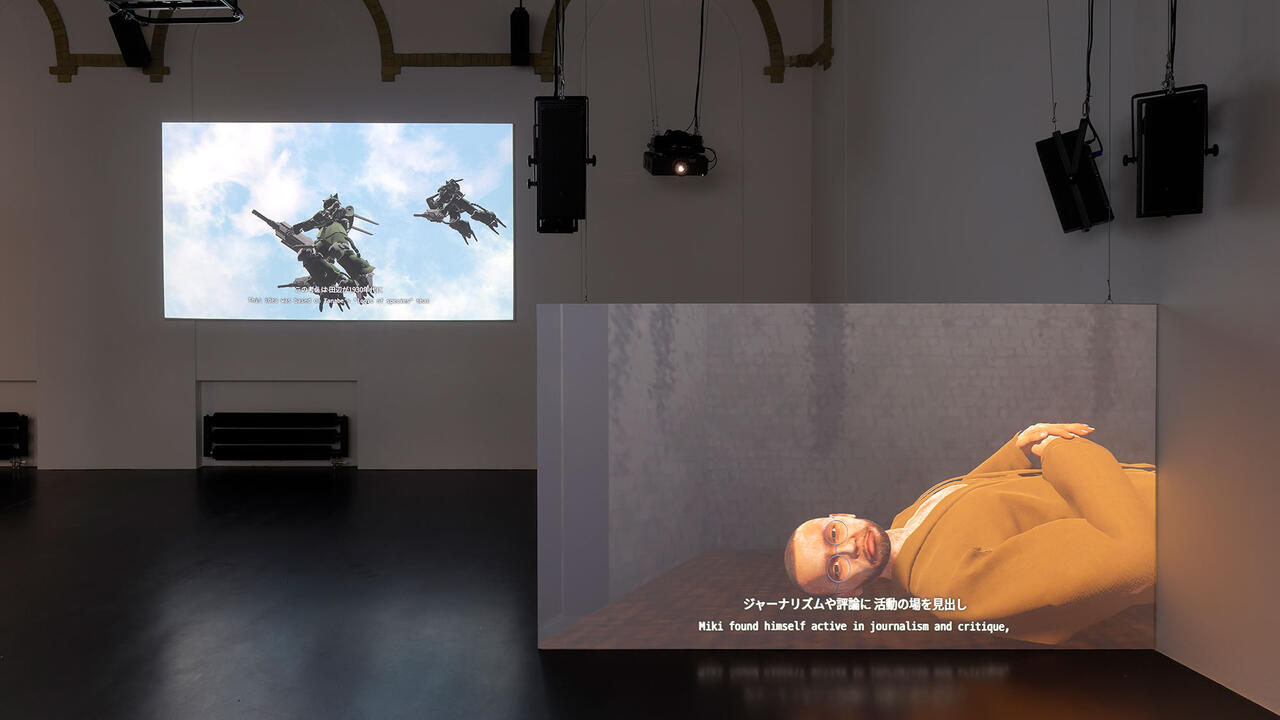Living Dust

Of all Superman’s superpowers, perhaps the most poetic is his ability to crush coals into diamonds with his bare hands. Involving the compression of messy black carbon into something new, clean-lined and beautiful, it’s in many ways close to drawing – which is odd, given that the Man of Steel is himself the product of drawing. It’s possible that this superpower serves a meta-purpose, allowing the comic book artist to speak about the materiality of his medium, something that becomes hidden once the pencilled page has been overlaid with inks, colours and text. At any rate the image of Superman blowing stray particles of coal dust from his palms is hard to get out of your head.
Curated by British artist David Musgrave, ‘Living Dust’ was a show that, in pulling us away from what drawings represent, sought to push us towards what they are. Featuring works on paper from the 16th-century to the present day, it played fast and loose with conventional notions of curatorial responsibility, pitting John Ruskin against David Shrigley, a Rembrandt self-portrait against an Ed Ruscha gunpowder piece. Musgrave, however, avoided the art-historical frictions and flashpoints this implies by insisting on the ontology of his selections, their status as stuff. As he writes in the show’s catalogue, drawings are not ‘abstract signs we subsequently use to communicate with others who recognize [them], but [objects] to be treated as having a particular, substantial reality of [their] own’.
In a number of works in the show this ‘substantial reality’ was pretty fugitive, forever flickering in and out of focus. Take Dean Hughes’ lithographic print Two Pieces of A4 Ruled Paper (2004), a nearly perfect simulacrum of sheets torn from a standard legal pad. Looking at their ruled lines, it was hard to think of them not as things that demarcate space but as things-in-themselves. To do so, one had to accept the proposition that the borders between territories are territories themselves, and that, although text was not present in the piece, this did not imply a lack, however much Hughes’ pristine horizontals seemed to anticipate love poetry or half-arsed lecture notes.
Drawing and writing were even harder to prise apart in Paul Noble’s Nobpark (Big Tent) (1998). The piece depicts a tent in the shape of the word ‘tent’, pitched in a depopulated sylvan setting in which mountains loom and the trees sprout suspiciously papery leaves. This shelter is, in a very real way, a fiction to inhabit, and one whose tangled genealogy includes both the general stuff of language and the specific stuff of pictorial representation. Near its entrance a cow chews the cud, blithely unaware that it is sitting in the shadow of a semiological conundrum. Perhaps its presence is an appeal for a pre-verbal – and very material – way of approaching the world, an argument that’s given weight by the teeming menagerie of beasts that populated ‘Living Dust’: a smug-looking lion in Albrecht Dürer’s St Jerome in His Study (1514), a scaly leviathan in Max Ernst’s The Escaped (1926), bug-eyed owls and antelopes in Rupert Norfolk’s Animals (2004) and Chris Ware’s comic book character Quimby the Mouse (1994). In an echo of the exhibition’s paradoxical Schrödinger’s cat of a title these bright-eyed, wet-tongued creatures were juxtaposed with the arid geology of Vija Celmins’ Untitled (Irregular Desert) (1973). A drawing of a sun-baked wasteland in which the erosion of rocks into sand echoed the wearing away of Celmins’ pencil as she brought the image into being, it walked a tightrope between the breakdown and building up of form, between – ultimately – a sort of death and a sort of life.
Musgrave’s show would have not been complete without one of his own drawings, and happily the work he selected fitted the theme of ‘Living Dust’ like a pencil fits a sharpener. His Transparent Head (2003) is a graphite depiction of a clear plastic bag, bunched into a shape that our eyes read as a human head. What’s interesting, here, is how reluctant the brain is to abandon this reading and instead revel in the artist’s facility with tone, line and form. This is due in part, of course, to the piece’s title (the tyranny of words again), but we may also attribute it to anthropocentric narcissism, the human consciousness’ wish to see itself mirrored in even an empty head. Like the other works in the show, Musgrave’s is one that pointed to the complexity and uniqueness of drawings, their status not as language systems but as material deposits – drifts of half-exhilarated, half-exhausted living dust.

















